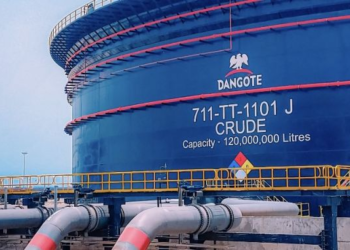OPEC, the Organization of the Petroleum Exporting Countries, experienced a second consecutive monthly increase in oil production in September, according to a recent Reuters survey. This upturn in output occurred despite ongoing efforts by major OPEC members, including Saudi Arabia, to implement production cuts aimed at stabilizing global oil markets.
In September, OPEC members collectively pumped approximately 27.73 million barrels per day (bpd), marking a 120,000 bpd increase compared to August. It’s worth noting that August had already seen the first increase in production since February.
Nigeria and Iran played pivotal roles in driving this surge in production. Nigeria, which has grappled with challenges such as crude theft and regional insecurity in its oil-producing areas, managed to significantly boost its exports by 110,000 bpd in September. The country aims for further production recovery in the coming year.
Iran, despite facing U.S. sanctions, contributed to the production hike by reaching its highest output level since 2018, pumping 3.15 million bpd. This increase appears to be a result of Iran’s ability to navigate U.S. sanctions and a degree of discretion exercised by the U.S. in enforcing them, possibly indicating a desire for improved relations between the two countries.
Among the ten OPEC members that are bound by OPEC+ supply cut agreements, production increased by 80,000 bpd. Notably, Saudi Arabia and other Gulf members continued to demonstrate strong compliance with the agreed-upon production cuts, including voluntary reductions.
Saudi Arabia, the leading exporter within OPEC, maintained its August output level of nearly 9 million bpd. The country has extended a voluntary 1 million bpd output cut in an effort to provide additional support to the global oil market.
In contrast, Iraq and the United Arab Emirates modestly increased their output, while Angola experienced the most significant decline in the group, with a reduction of 50,000 bpd, primarily due to decreased exports.
Despite the recent uptick in production, OPEC’s overall output still falls short of the targeted level by approximately 700,000 bpd. This is mainly attributed to Nigeria and Angola’s limitations in achieving their agreed production levels.
RateCaptain survey, which tracks supply to the market, draws data from various sources, including external shipping data, Refinitiv Eikon flows data, information from companies that monitor flows such as Petro-Logistics and Kpler, and insights provided by sources within oil companies, OPEC, and consultancy firms. The survey serves as a critical tool for understanding the dynamics of the global oil market.











